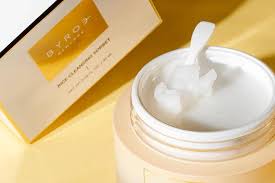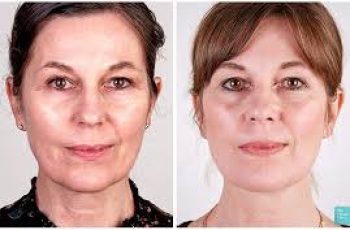
When Do Skincare Products Expire?
Skincare products play a crucial role in protecting your skin, which acts as your first line of defense against various external threats such as harmful UV rays, bacteria, dirt, extreme cold, and pollutants.
The outer layer of your skin, known as the epidermis, is constantly exposed to these environmental hazards, making it vulnerable to damage.
While your skin is resilient, it is essential to provide it with the right care to maintain its health and strength.
Skincare products, including sunscreens, moisturizers, and acne treatments, are formulated to help protect your skin from these threats while keeping it hydrated, nourished, and youthful.
However, over time, skincare products, like most other consumables, can degrade, lose their effectiveness, and may even become harmful to your skin.
This is especially true when skincare products pass their expiration date.
When a product expires, not only does it lose its intended efficacy, but it may also become a breeding ground for harmful bacteria, fungi, or mold, which can cause irritation, infection, or allergic reactions.
Therefore, understanding the shelf life of your skincare products and knowing how to store them properly is essential for maintaining your skin’s health.
How Long Will Your Skincare Products Last?
The shelf life of skincare products varies based on several factors. These include the specific type of product, how often it’s used, and the conditions under which it is stored.
Unfortunately, there are no universal guidelines for the shelf life of cosmetics or skincare products.
In the United States, for instance, the Food and Drug Administration (FDA) does not regulate the expiration dates of most skincare products.
Instead, it is the manufacturer’s responsibility to determine the product’s longevity and safety.
While some manufacturers might offer more specific information about the expiration of their products, there are some indicators to look out for.
Many skincare products feature a “period after opening” (PAO) symbol. This is usually a small image of an open jar with a number next to it, followed by the letter “M” (for months).
For example, if the symbol shows “6M,” it means that the product should be used within six months after opening.
However, it is important to note that in the United States, including this symbol is not mandatory, although many brands are adopting it for better transparency and consumer awareness.
Another exception to the general rule is sunscreen. Since sunscreens are classified as over-the-counter (OTC) drugs by the FDA, they are required to have an expiration date.
The FDA stipulates that sunscreens must retain their original strength for at least three years from the date of manufacture.
Therefore, if you buy a bottle of sunscreen, it is essential to check the expiration date.
If it is missing, dermatologists recommend that you mark the date of purchase on the container, allowing you to discard it after three years.
Using expired sunscreen increases the risk of skin damage, including sunburn and premature aging, due to its decreased effectiveness.
Factors That Affect Shelf Life
The shelf life of your skincare products is influenced by various factors that can lead to the degradation of their ingredients over time.
These factors can affect the performance of the product, as well as its safety for your skin. Here are the primary factors that determine how long a skincare product lasts:
Application Method: The way you apply a product can impact its shelf life.
For instance, using your fingers to scoop out moisturizers, creams, and ointments from jars introduces bacteria, oils, and dirt from your skin into the product.
Even using an unclean applicator, such as a sponge or cotton pad, can lead to contamination. This not only reduces the product’s effectiveness but also exposes your skin to the risk of infections and irritation.
Exposure to Moisture: Moisture is another factor that accelerates the degradation of skincare products.
Humid environments, such as a warm and steamy bathroom, encourage the growth of bacteria and fungi.
These microorganisms thrive in moist conditions, potentially contaminating your skincare products and leading to skin irritations, rashes, or infections.
Type of Product: Water-based skincare products, such as hydrating serums or facial mists, are more susceptible to bacterial growth compared to oil-based or powder-based products.
The presence of water provides an ideal environment for microorganisms to multiply. On the other hand, products that contain alcohol or have a higher concentration of preservatives may last longer.
Temperature Fluctuations: Extreme or fluctuating temperatures can damage skincare products.
When exposed to heat or cold, the formulation of certain products can break down, causing them to separate, lose texture, or dry out.
For example, products like lotions, serums, or creams can become less effective when stored in environments with extreme temperature changes.
Storage Conditions: Long-term storage, particularly in less-than-ideal conditions, accelerates the breakdown of preservatives.
Preservatives are vital to prevent contamination, but they lose their efficacy over time.
Storing skincare products beyond the recommended period can allow microorganisms to proliferate, even in products that originally contained preservatives.
Multiple Users: Sharing skincare products can also affect their shelf life.
When multiple people use the same product, the introduction of bacteria, oils, or dirt from different skin types can lead to contamination.
In turn, this can lead to a higher risk of infections, irritation, or allergic reactions.
Preservative-Free Products: Natural or organic skincare products that are free from synthetic preservatives typically have shorter shelf lives.
Without preservatives to prevent the growth of harmful microorganisms, these products can spoil much faster.
If you prefer natural skincare, be sure to follow the manufacturer’s instructions on how to store and use the product within a specific period.
How to Recognize If Your Product Has Expired
It’s not always easy to tell when a skincare product has expired, especially if the expiration date or PAO symbol is missing.
However, there are a few signs you can look for to help determine whether a product is past its prime:
Changes in Color: If a product has changed color, it may indicate that the ingredients have deteriorated.
For example, a white cream that turns yellow or a pink serum that fades may have lost its effectiveness.
Texture Changes: Expired products may develop a different texture compared to when they were new. If a product has become lumpy, clumpy, or separated, it may be time to discard it.
Separation: Products that separate into layers or show visible signs of curdling or thickening may have expired. This is especially common with creams, lotions, and serums.
Dry, Flaky, or Crumbly Consistency: If the product appears dry, flaky, or crumbly, it is likely no longer effective or safe to use.
Unpleasant Odor: A change in smell is a strong indicator that a product has gone bad. If the product smells rancid or sour, it is best to throw it out immediately.
Odd Sensations on Skin: If you notice that the product feels different on your skin, such as stinging, burning, or causing irritation, it may have expired.
Pay attention to how your skin reacts after applying the product.
Health Risks of Using Expired Skincare Products
Using expired skincare products can pose significant health risks. As skincare products age, their effectiveness diminishes, making them less able to perform their intended function.
For example, an expired sunscreen may not provide sufficient protection from harmful UV rays, leaving your skin vulnerable to sunburn and other forms of sun damage.
In addition to decreased effectiveness, expired products can harbor harmful bacteria, fungi, and mold.
These microorganisms can trigger skin infections, including conditions like eczema, folliculitis (inflammation of hair follicles), or impetigo (a bacterial skin infection).
Using contaminated products may also cause acne breakouts, rashes, or allergic reactions, leading to irritation or more severe dermatological issues.
Tips for Storing and Caring for Your Skincare Products
To extend the shelf life of your skincare products, proper storage is key. Here are some helpful tips to keep your products fresh and free from contamination:
Store in a Cool, Dry Place: Ideally, your skincare products should be stored in a room-temperature environment, away from direct sunlight or heat sources.
A cabinet, drawer, or closed box is a good option for keeping them cool and dry.
Avoid the Bathroom: Although it may seem convenient, storing products in the bathroom is not recommended.
The humidity and steam from showers or baths can degrade the ingredients and encourage bacterial growth.
Use a Cosmetic Refrigerator: If you have natural or preservative-free products, consider investing in a cosmetic refrigerator.
These small fridges help maintain a consistent, cool temperature, which is ideal for products like serums or oils that contain vitamin C, a compound that oxidizes quickly when exposed to air and light.
Keep the Lid On: Always ensure that your skincare products are tightly closed to prevent air, moisture, or contaminants from entering the container.
This is particularly important for products stored in jars or bottles with screw-top lids.
Avoid Sharing Products: Sharing skincare products with others can introduce bacteria and germs, shortening their shelf life. Try to keep your products for personal use only.
Use Clean Tools: When applying skincare products from jars, use spatulas, cotton swabs, or clean brushes rather than your fingers. This helps prevent contamination and keeps the product fresh for longer.
In Conclusion
The shelf life of your skincare products depends on various factors, including the type of product, how it is used, and the way it is stored.
To keep your skincare routine safe and effective, always check for expiration dates, observe changes in texture or smell, and store your products in cool, dry places away from moisture.
When in doubt, it’s better to discard an expired product than risk irritating your skin or developing an infection.
Regularly inspect your products and adopt healthy skincare practices to keep your skin fresh, protected, and radiant.


